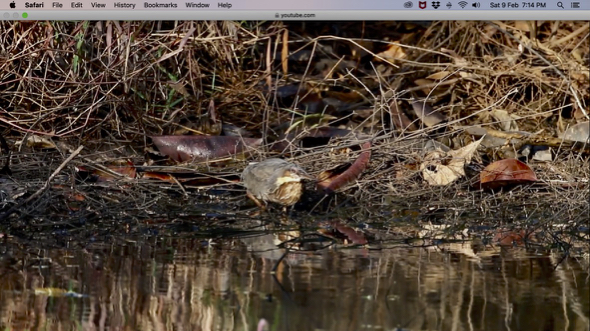
Jeremiah Loei’s video clip of a Black Bittern’s (Ixobrychus flavicollis) peculiar movements reminds him of a sort of hunting dance. This was documented at Baker Street, Singapore
On seeing the video, Subaraj Rajathurai commented: “Wow! Never seen that before! Best guess is that it is either shaking its breast like a lure to attract fish or it could be a defence behaviour when feeling threatened. Most interesting.”
Dato’ Dr Amar-Singh HSS was kind enough to do some research on the behaviour and sent the following:
“I appreciate the opportunity to comment on this fascinating behaviour. The Black Bittern (Ixobrychus flavicollis) is a secretive bird and not that much is known about its behaviour; hence this observation is important. Some Snipe are known to bob the body up and down. the Jack Snipe (Lymnocryptes minimus) in particular has a distinctive, hypnotic bobbing movement. Some Bitterns, Herons and Egrets are known to sway, a rhythmical movement from side to side. For example, the American Bittern (Botaurus lentiginosus) when disturbed assumes ‘a reed-like position in which the head points skyward and the body sways back and forth as if it were a blade of grass blowing gently in the breeze’ (see: LINK and LINK). Other birds sway the body as part of courtship, as in the Little Heron (Striated Heron) Butorides striata javanica I recently posted.
“But what we are seeing in this video is a “neck sway”. Willard (1977) describes a number of Egrets and Herons that use neck or head swaying as part of a foraging technique (PDF); the bird is trying to either unsettle the prey or adjust before striking. Other suggest that Bitterns are doing a neck sway ‘to see past glare from the surface of shallow water, or to warm up its muscles for a quick strike’ (LINK).
“The Black Bittern in the video has yet to fix on any prey but appears to be doing the neck sway as warming up activity as it moves to the water to feed; limbering up exercises before striking to feed. Note also that the head and neck feather get lifted up transiently, as part of the activity; possibly again to get ready.
“We have much more to learn about this Bittern.”
Jeremiah Loei & Subaraj Rajathurai
Singapore
6th February 2019
Dato’ Dr Amar-Singh HSS
Ipoh, Perak, Malaysia
13th February 2019
This post is a cooperative effort between Birds, Insects N Creatures Of Asia and BESG to bring the study of birds and their behaviour through photography and videography to a wider audience.









One Response
Good observation Jeremy.
In Taiwan slow swaying of neck by Gorsachius goisagi frequently observed before a prey strike.
I agree, this gestulating behaviour before a premptive quite pronounced in Heron/ Egret species.